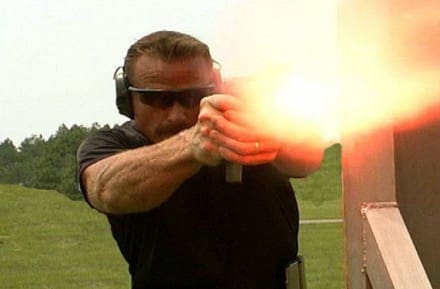Perform the appropriate amount of correct repetitions on the range. The best performers on the globe, regardless of the skill, practice perfectly and if necessary, in slow motion to perfect their craft. There are certain aspects of gun handling and gun fighting that have to be performed at a subconscious level. We human beings are not multi-taskers. I hate to be the bearer of bad news, but we cannot perform two tasks at the same time at a conscious level. We can however, task switch, task stack or perform tasks subconsciously. We should be accessing the subconscious’ data bank during weapon’s manipulation, to include safety manipulation, magazine changes, and the fundamentals. We can therefore, at a conscious level, maintain situational awareness, forecast, predict, and plan
Patrick McNamara
SGM, US Army (Ret)

Patrick McNamara spent twenty-two years in the United States Army in a myriad of special operations units. When he worked in the premier special missions unit, he became an impeccable marksman, shooting with accurate, lethal results and tactical effectiveness. McNamara has trained tactical applications of shooting to people of all levels of marksmanship, from varsity level soldiers, and police officers who work the streets to civilians with little to no time behind the trigger.
His military experience quickly taught him that there is more to tactical marksmanship than merely squeezing the trigger. Utilizing his years of experience, McNamara developed a training methodology that is safe, effective and combat relevant and encourages a continuous thought process. This methodology teaches how to maintain safety at all times and choose targets that force accountability, as well as provides courses covering several categories, including individual, collective, on line and standards.
While serving as his Unit’s Marksmanship NCO, he developed his own marksmanship club with NRA, CMP, and USPSA affiliations. Mac ran monthly IPSC matches and ran semi annual military marksmanship championships to encourage marksmanship fundamentals and competitiveness throughout the Army.
He retired from the Army’s premier hostage rescue unit as a Sergeant Major and is the author of T.A.P.S. (Tactical Application of Practical Shooting).
Gunfighter Moment is a weekly feature brought to you by Alias Training & Security Services. Each week Alias brings us a different Trainer and in turn they offer some words of wisdom.

















































































































